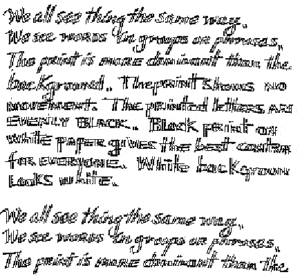I love learning – to be more specific, I love to read. Oftentimes, friends and family will poke fun at me for my adoration of academic journals and research papers. Honestly, they’d probably make fun of my use of “adoration,” and ask why I couldn’t use a word like “love,” or “appreciate,” instead. 70% of it is to make use of the new words in my lexicon, something that I scored low on for most of my life, but 30% of it is.. Because I am the youngest of four and I like to annoy with small things every once in a while, it’s a gift.
Reading is a subject that was not always at the top of my list for favorite hobbies. In fact, it wasn’t until I was in my early 20s that I started to develop a taste for it. In my early childhood I would avoid reading by choosing books below my reading level as a way to feel safe and meet my “reading goals,” in school. My vocabulary was stagnant and based on verbal communication. One of my biggest deterrents? Font. Older books that were used in the classroom offered little space between sentences, and smaller spaces between words. I would read a page, and then the reflection of the words printed in black would become a bright glare when I looked away.
Similar to this image:

Graphic by: understandingwhatdyselxiais.weebly.com
It was not until I was much older, and a dyslexia diagnosis later, that I realized that this was atypical. For most of my adolescence, I thought that reading just was not for me, and that only the smartest people could withstand the task. The National Library of Medicine states, “…about 5 % of all children and about half of all dyslexic children complain of visual problems when they try to read: letters appear to blur, move around and go double, so the children cannot see them properly, which often gives them eyestrain and headaches.” (National Library of Medicine). Meaning, I was not alone in this phenomenon.
Overcoming font sensitivity is tough, I am not going to sugar coat it. For me, I have to reread multiple physical texts or explore options in changing online/virtual fonts. Unfortunately, this is time taking and was a reason that I *should have* utilized my time extension accommodation in college more. A tool that I did use in college while facing old textbooks with small fonts? Office hours. Multiple times a week. Especially when dealing with font sensitivity issues (or math).
Although there is no cure, there are ways to combat font sensitivity. Browser extensions can help to change the font to be more visually friendly. Take time to read, reread, and then reread again. Challenges can bring out our insecurities. It is easier to quit than to commit. Your favorite book is still waiting for you to find it and read it so many times that the front cover hangs on by a thread.
